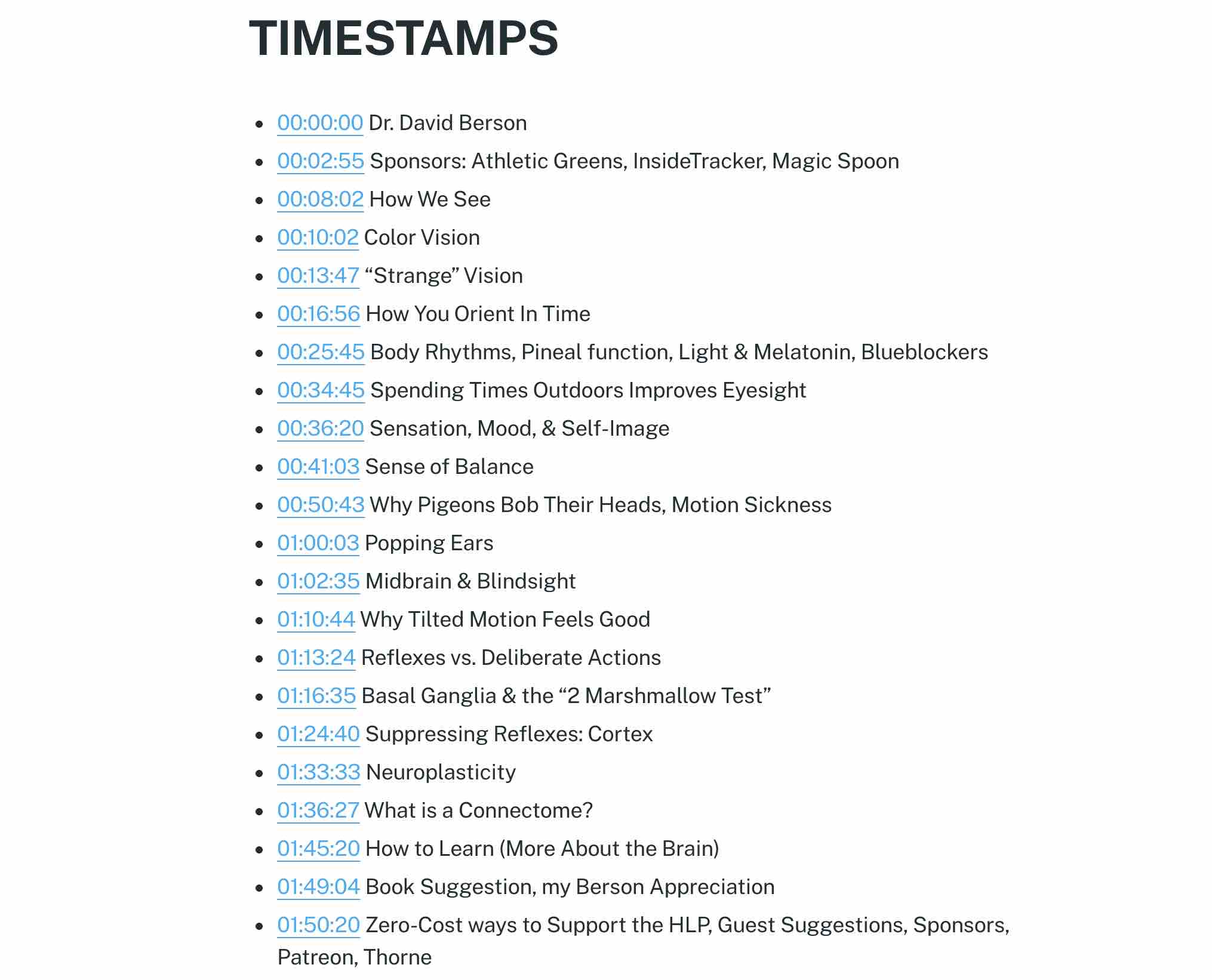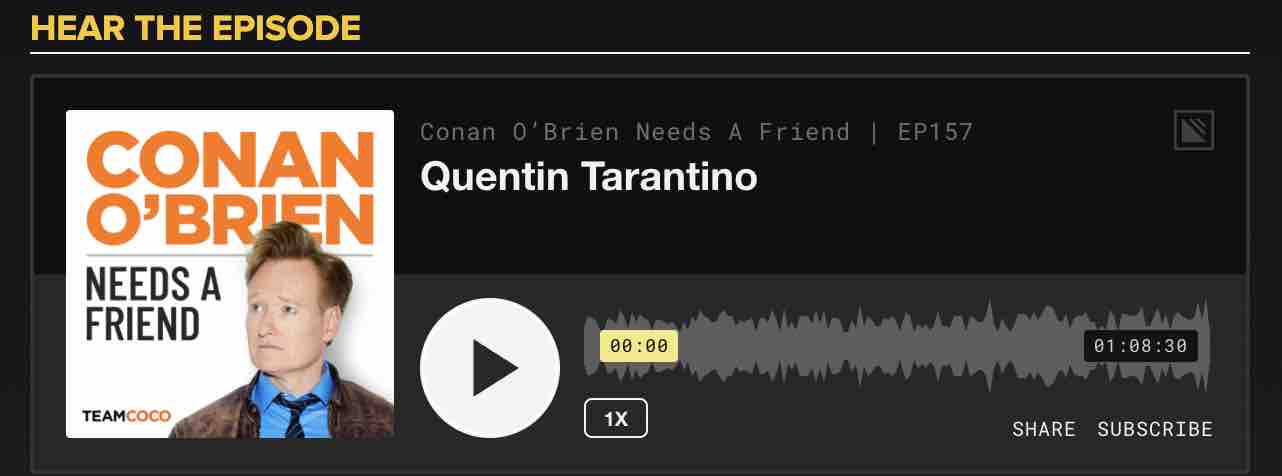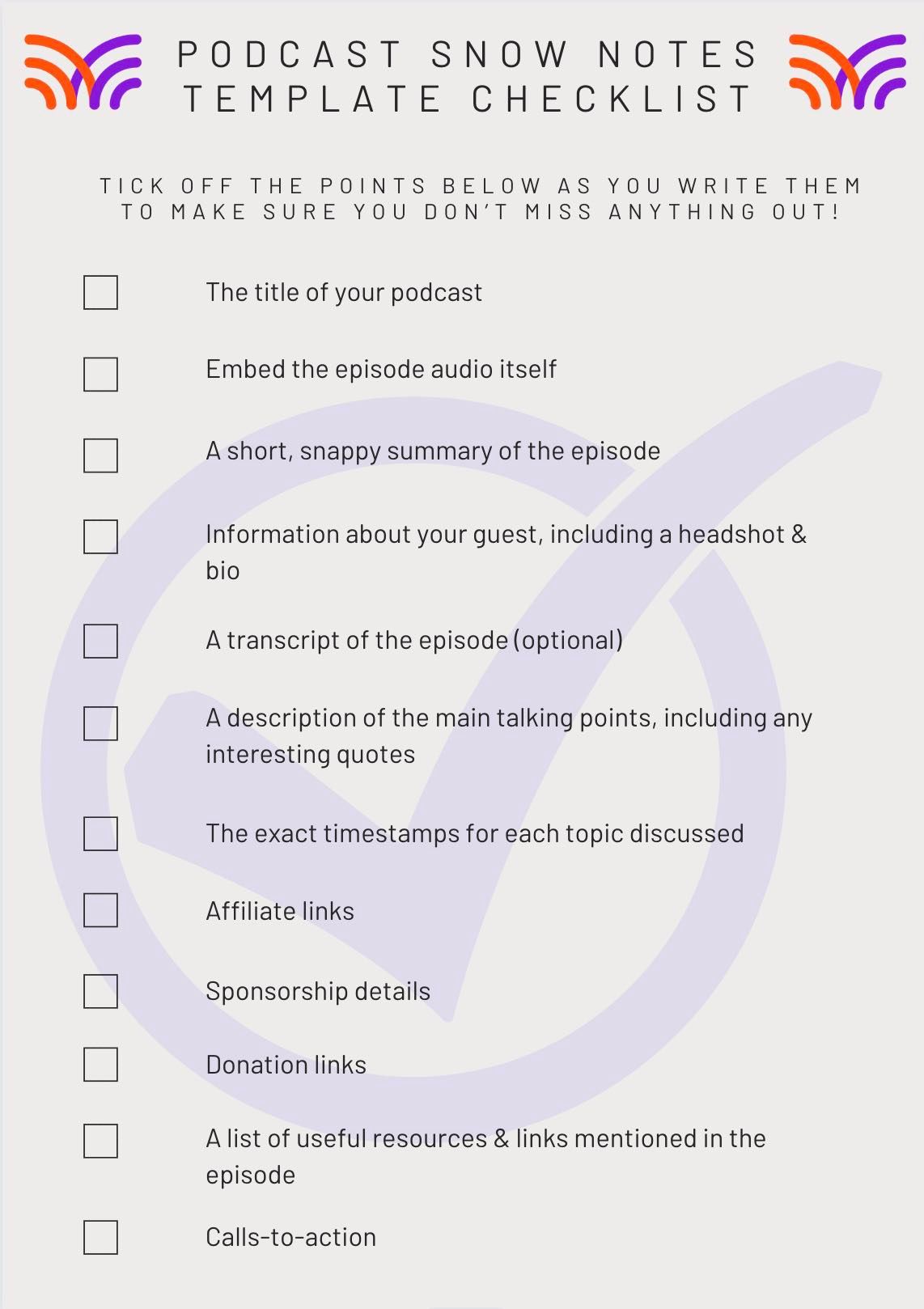By publishing episodes without podcast show notes you’re missing an opportunity to increase your website traffic and reach new potential listeners.
Well-written show notes create an incentive for your existing listeners to visit your site. And they also help strengthen the overall SEO presence of your podcast. In short, they act as a central information hubs for your episodes - providing relevant contextual detail, transcripts, timestamps, links to helpful resources, and more.
Yes, they take a bit of extra time to create (typically 20 - 30 minutes). But they’re fairly straightforward once you know what to include. This article will tell you everything you need to know in regards to why you should be writing them, as well as the best ways to go about it.
5 Reasons Why You Should Write Show Notes
As mentioned above, podcast show notes are useful for a few different reasons. We’ve covered 5 of them in more detail below.
1. Gives Audiences More Context
Show notes are the perfect place to tell your listeners a bit more about each episode. We’ll get into the specifics of what your notes should include later, but generally, their purpose is to inform the listener on what they can expect from tuning in. Whether it’s a bit more insight into the topic or the guest, providing more information is key to satisfying those invested listeners who want to dig a bit deeper.
2. Encourages Listeners to Visit Your Website
Because Google prioritises the written word over anything else, podcasts alone aren’t overly discoverable. This means you’ll need to do some extra SEO work to get noticed, and show notes are a good way of driving traffic to your website. One simple way you can do this is by directing listeners to check out the full show notes on your website. Mentioning them in the intros of your episodes will do the trick (more on that later). Plus, providing some form of written content to accompany your podcast lets Google’s algorithm acknowledge, read, and rank your content.
3. Lets You Cross-Promote Older Episodes
If you’re constantly putting out new episodes, it’s easy for older ones to become buried in your backlog. And if there’s a particular episode that you’re really proud of, it’d be a shame for it to never see the light of day again. Using show notes to cross-promote previous episodes of your own podcast can help stop this from happening. For example, if a newer episode relates to an older one and you think your audience might be interested in it, listing it in your show notes is helpful.
4. Makes Episodes More Shareable
Podcast show notes are not only good for encouraging engagement, but they’re also easy for listeners to share amongst their peers. If they’ve already made their way to your website, and the content is useful, they’ll be more inclined to share it with someone else. If you don’t incorporate show notes into your overall podcast marketing strategy, it’s a lot harder for the listener to do so. Everyone uses different podcast listening apps, so sharing a single URL accessible to everyone is much more practical.
5. Encourages People to Hit ‘Subscribe’
Whilst getting people to your website is the main goal of creating show notes, they can also encourage people to subscribe to your podcast if they haven't already. It’s a win-win. If they like what they see, they might be tempted to tap the subscribe button on the page whilst they’re there.
10 Things to Include in Your Podcast Show Notes
Below, we’ve listed everything you should include in your podcast show notes to make them as helpful as possible.
1. A Quick Summary of the Episode
The first thing you should include is a summary of the episode at hand. Keep it short and snappy, the aim is to hook them in. Try to also round up what the episode is about, what topics it touches on, and what the reader will learn from it. You might even want to think about adding in a thought-provoking question to get them thinking. If you can spark their interest from the get-go, the chances of them hitting the ‘play’ button will be higher.
2. Information About Your Guest
If you’ve got a guest (or guests) speaking on your episode, providing readers with some context is important. Telling your audience who the guest is, what they do, and why you’ve asked them to speak is effective for drawing people in. Especially if it’s somebody that they’re unlikely to have heard of before. Make sure you don’t ramble on for too long, though. You should keep the most relevant bits unique to the audio. Adding in a headshot and links to their social feeds is also useful.
3. Main Talking Points
Putting the episode’s main talking points into the show notes is a key factor. Be careful with this, though. Whilst you want to give the reader a good representation of the topics being discussed, you don’t want to give it all away too soon. What you do want is for them to actually listen to the episode, so creating a sense of excitement or intrigue around your main discussion points is helpful. This is also the perfect place to pick out memorable quotes and add in timestamps (more on that shortly).
4. Interesting Quotes From the Episode
When you’re setting out the main points of each episode, picking out an intriguing quote is a great way of convincing the reader to listen. Don’t over-do it, one or two is enough. Nobody knows your audience more than you, you know what they’re looking for. So choosing one that you know will appeal to them is important. We’d also recommend noting the exact time of the quote, just to make it easier for them to find it in the episode.
5. Timestamps
Timestamps tell the reader exactly when each topic is discussed in the episode. It’s basically a nice way of not wasting your listeners time. Without them, you’re asking your audience to commit to the entire episode, when really, they might only be interested in one topic. Breaking down each episode into sections will not only earn respect, but it might also entice more people to listen in the first place. If you can appeal to their needs and directly point them to what they're looking for, they’ll be more likely to listen.
Carey Green, host of Podcastification and founder of Podcast Fast Track, spoke about the usefulness of adding in timestamps in a recent episode of his show. He said:
If people can see exactly when you talk about X, Y and Z, and they really want to know about X, Y and Z, they can just go directly there. You’re improving the user experience, and they’re going to like your podcast better if they have a better user experience.
And here's what a set of timestamps typically look like:

6. The Episode's Audio
Keeping everything in one place makes for easier listenership, and that’s why you should also embed the actual episode into your podcast show notes. Your listeners won’t want to be flicking between various apps and browsers. It’s your job to give them what they’re looking for. All you need to do is include the audio version somewhere on the page, so the reader can easily find it (generally speaking, towards the top of the page is the best place to embed the audio file).

7. A Transcript of the Episode (Optional)
There are a few different reasons why adding a transcription of your podcast into your show notes can be worthwhile. It’s good SEO practice for one, which is the main aim of writing them in the first place. It’s also a great way of making your podcast more accessible. Some of your listeners may be hard of hearing, so providing an alternative is an effective way of being more inclusive.
Transcribing your audio by hand would take a very long time. Fortunately, you don't need to do that. There are plenty of automated transcriptions services out there that can create one in minutes, like our one at Podcast.co. All you need to do then is tidy up the raw transcript to correct any typos and make sure it's clear who's talking when. Providing a transcript isn't an essential element, but it's a nice way to go above and beyond the enhance the user experience for listeners.

8. Affiliate & Sponsor Links
If you’ve got any affiliate links, sponsorship deals, merch, or live events to shout about, podcast show notes are a good place to list them. It’s always a good idea to give a bit of context too, just so the reader can understand why you’re working with certain brands or people. This is also a good way of building trust amongst your community.
How to Get Well-Fitting Podcast Sponsors (Pitch Template)
9. Links to Other Helpful Resources
This one’s important. When editing your episode, make note of any useful books, websites, or resources mentioned by you or your guest. It’s good practice to clearly signpost all of these in your show notes. Doing so creates a strong incentive for invested listeners to visit your website to learn more. You don't need to necessarily justify each one, just make sure that you mention them somewhere on the page.
Let listeners know where they can find all the resources in your episode intros with a quick CTA. For example:
As always, you can find links to the things we mention in this episode in the show notes on the Podcast.co website. The link is in the episode description if you’d like to check go there and learn more.

10. Call-To-Actions
A good way to conclude your podcast show notes is with a call-to-action (CTA). You might want to direct them to your social feeds, review pages, or newsletter. CTAs are a key driver of engagement, and giving your audience a couple of instructions can play a big part in the growth of your brand. It also just shows them that you’re reachable, and once again, this is key for building a community around your podcast.
The Stylistic Do’s of Show Notes
Before you put pen to paper and start drafting your show notes, there are a few stylistic elements to keep in mind.
Make Sure They’re Clear and Concise
The simpler, the better. When writing your podcast show notes, get to the point quickly. Don't use more words than you need to. Large blocks of text can put people off, and if they're too difficult to digest, readers will probably just bounce and go somewhere else.
Use Headings and Subheadings
Another thing that can help make your content easier to digest, is using headings and subheadings throughout. By clearly labelling your paragraphs, you’re being transparent about your content from the get-go.
Keep Them SEO Friendly
Boosting your podcast’s SEO is one of the main reasons for writing show notes. With that in mind, you should aim for at least 300 words for optimal performance. You should also match your episode to a specific keyword that you’d like it to rank for on Google. Once you’ve decided what that keyword is, try to work it into the body of your show notes a couple of times. For more on this check out our guide below:
Stick To a Consistent Format
Because you should be writing podcast show notes for every episode you release, keeping them consistent is good practice. So make sure that they all follow the same layout, structure, and design. Creating a strong brand identity helps listeners become familiar with who you are. The little details matter more than you think.
What to Do With Your Show Notes Once They’re Published
After going to the trouble of creating your show notes, you're going to want to maximise their visibility. And there are a few different ways you can do that.
1. Plug Your Show Notes in Your Intros
As mentioned previously, direct listeners to your show notes in your episode intros. Telling listeners there’s more relevant content on your website will spark interest and encourage them to check it out. More insight for them, more traffic for you. Everyone’s a winner.
2. Share Them on Social Media
However big your social media followings are, it’s always useful to post your show notes when you release a new episode. They follow you for a reason, they want to hear from you. So whether you’re on Instagram, Twitter, Facebook or LinkedIn, sharing the link to your latest episode and show notes is a good idea.
Tips for Speeding Up the Writing Process
To help you write great podcast show notes as quick as possible, we’ve included some useful tips below.
Write Them Up as You Go
This is mainly for efficiency. Making notes before, during, and after you record your episode is useful. For example, if your guest says something interesting during the recording, and you think it would sit well in your show notes, jot it down on the spot along with the timestamp. This’ll make it easier for you to go back to the exact moment and grab the sound bite later, without having to trawl through the whole episode. Basically, don't wait until everything else is done before you start thinking about show notes.
Make a Template You Can Reuse
As mentioned above, keeping your show notes consistent is a good way of creating a familiarity and consistency around your podcast. So once you’ve written up your first set of show notes, and you’re happy with them, use it as a template for future ones. This means you won’t have to start from scratch every time.
Podcaster Carey Green also spoke about creating show note templates. He said:
Podcast show notes should display the same on your website and in all podcast listening apps. This means your formatting of your podcast show notes is going to be maintained, across platforms. And that’s a win for us, because we don’t have to create different versions. We can produce show notes in one monster document, and then repurpose sections of it for various locations.
As an example, check out the podcast show note template checklist that we’ve put together below. Feel free to use and adapt it for your own show.
Free Downloadable Podcast Show Notes Template (Checklist)
To help you out, we’ve put together the following podcast show notes template checklist. Feel free to download it when writing yours to ensure you don't leave anything out.

7 Examples of Well-Written Show Notes
If you’re looking for extra guidance, we’ve picked out 7 sets of well-written show notes. Each example looks slightly different, but they all successfully cover the majority of the main points above.
Jay Shetty’s On Purpose: Gabrielle Union
Serial, by This American Life: Season 1 Episode 1
My Favorite Murder: Emotional Money Booth
The Tim Ferriss Show with TOMS Founder, Blake Mycoskie
The NY Times’ The Daily: The Trial of Ghislaine Maxwell
Dax Shepard's Armchair Expert, with Anderson Cooper
Pod Save America: Age Against the Machine
Outsourcing Podcast Show Notes
If you’re more of a talker than a writer, or you just don’t have the resource to be scribing show notes yourself, there are freelance services that will create them for you. You’ll usually have to pay for this, but it’s a great alternative if doing them yourself isn’t feasible. If this is something you’re interested in, we’ve listed a couple of them below.






